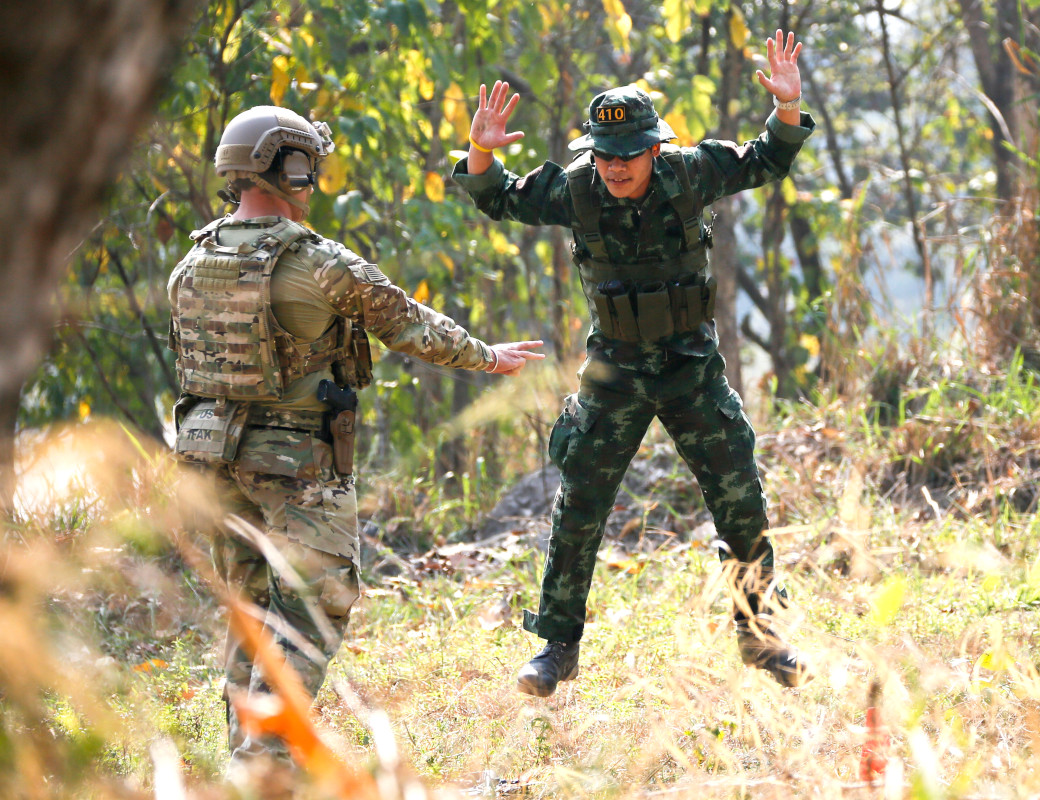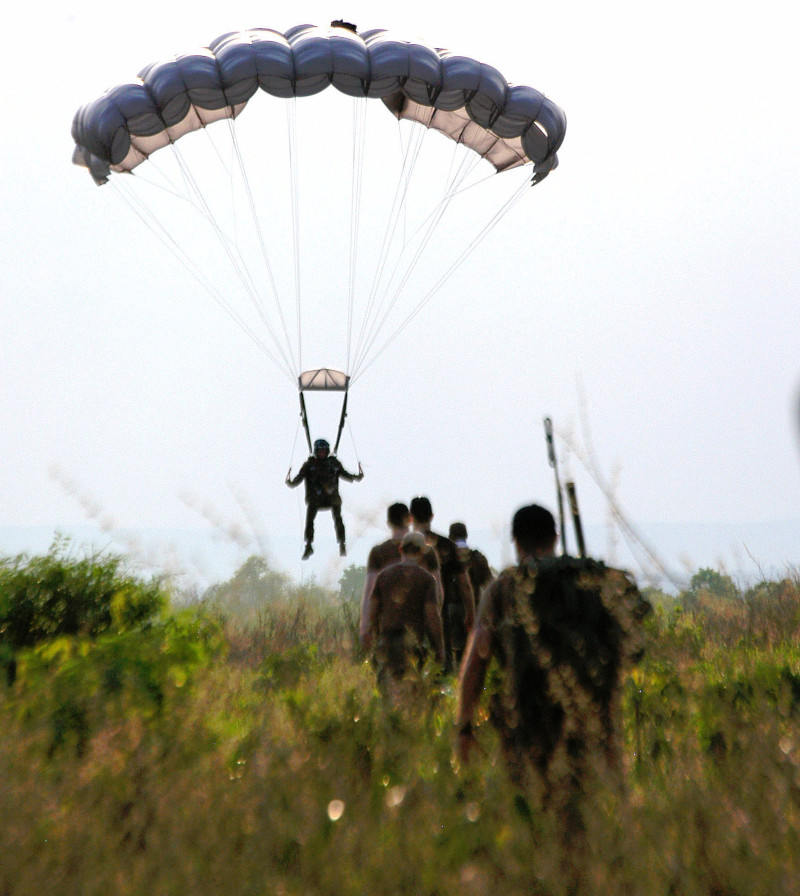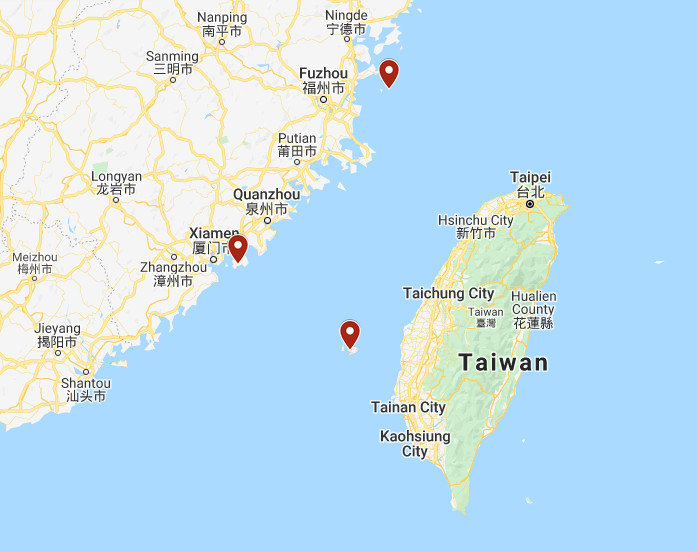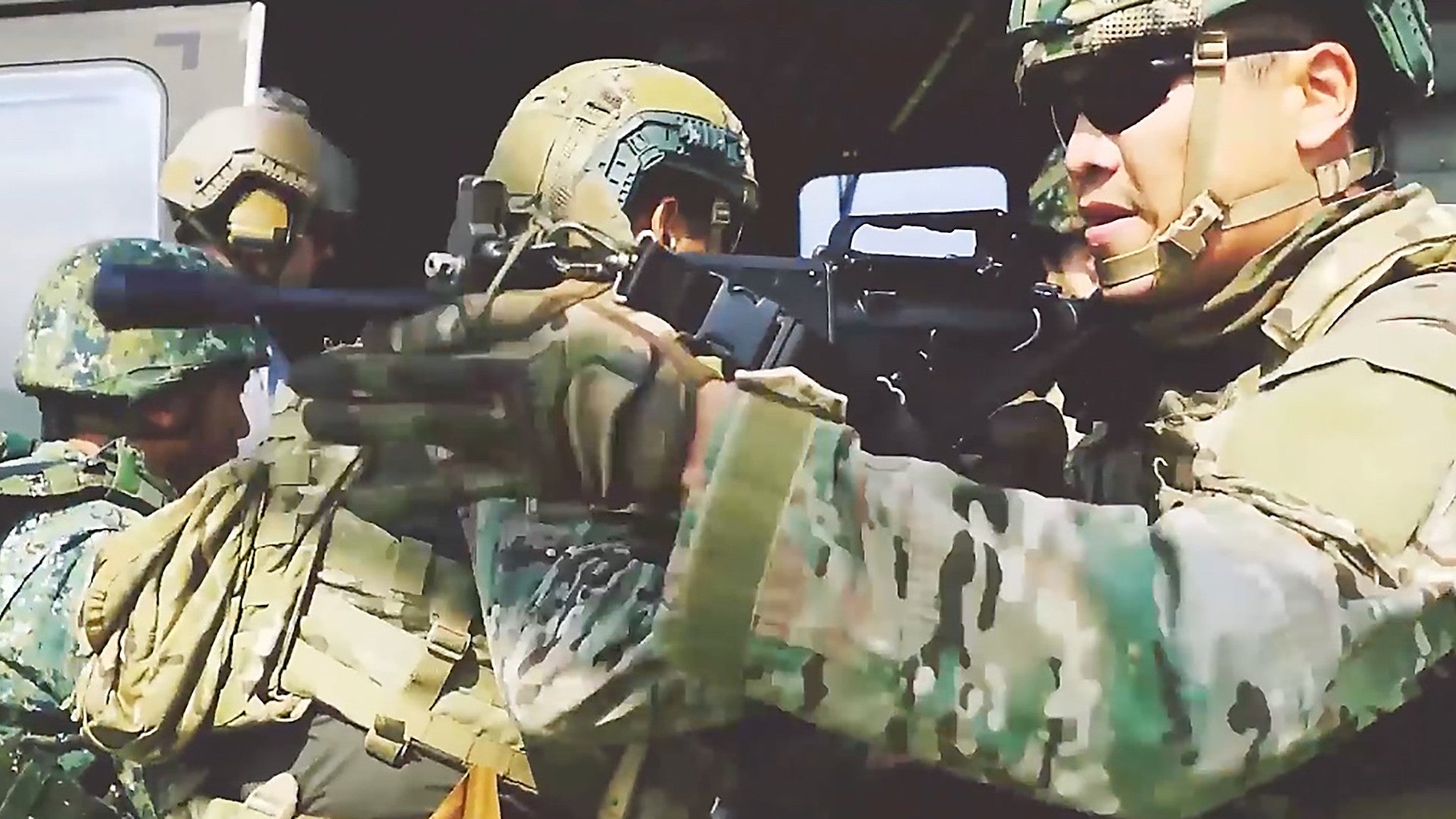An official video from the U.S. Army’s 1st Special Forces Group has offered a rare look at Green Berets training on the island of Taiwan. The unusual release comes at a time when authorities in Taipei are looking to further distance themselves from the mainland government in Beijing, which has prompted threats from Chinese officials. In addition, the U.S. government has increasingly shown its support for Taiwan in more visible ways, including sending warships and aircraft through the Taiwan Strait and approving significant arms sales to the Taiwanese military.
The 1st Special Forces Group first posted the short motivational video, titled “Excellence,” on its official Facebook page on June 16, 2020, and it remains up and prominently featured there at the time of writing. One segment notably shows Green Berets carrying a mock casualty to what is clearly a Taiwanese Army UH-60M Black Hawk helicopter, which is readily identifiable by the blue and white insignia on the tail boom. In another clip, an individual is seen holding a Type 91 assault rifle, the standard individual arm of the Taiwanese military.
On June 29, the Chinese language Lianhe Zaobao newspaper in Singapore reported that the U.S. military had confirmed that the video shows Green Berets taking part in an exercise nicknamed Balance Tamper in Taiwan. A Taiwanese Army special operations unit, the 101st Amphibious Reconnaissance Battalion, also known as the Sea Dragon Frogmen, which is analogous to the U.S. Navy SEALs, also reportedly participated.
1st Battalion, 1st Special Forces Group is forwarded deployed on the Japanese island of Okinawa and is assigned to Special Operations Command Pacific (SOCPAC). The rest of the group is based at Joint Base Lewis-McChord in Washington State, but is also focused on the Pacific region.
Lianhe Zaobao did not offer any additional specific details about the exercise, but “Balance” is a so-called “first word” that SOCPAC uses for ground-focused Joint Combined Exchange Training (JCET) events that U.S. Army Special Forces conduct throughout the Pacific region with allied and partner units, including foreign special operators. The War Zone is aware of at least 13 other exercises in the Balance series that occur regularly or semi-regularly involving Australia (Balance Action), Bangladesh (Balance Buffalo), India (Balance Iroquois), Malaysia (Balance Mint), the Maldives (Balance Metal), Mauritius (Balance Monk), Mongolia (Balance Magic), Nepal (Balance Nail), New Zealand (Balance Net), the Philippines (Balance Piston), South Korea (Balance Knife), Thailand (Balance Torch), and Vanuatu (Balance Velvet). SOCPAC also routinely sends Air Force and Navy special operators to various countries to conduct air and maritime-focused JCETs, with those exercises beginning with the first words “Teak” and “Flash,” respectively.

JCETs provide a relatively low-impact way for U.S. special operators to train and train with foreign allies and partners that might work with during future military or humanitarian assistance operations. A typical JCET deployment is under 100 personnel, and usually closer to between 10 and 40 individuals.
These small exercises usually focus on relatively general skill sets, such as small unit tactics, nighttime parachute jumping, and casualty management and other medical skills. JCETs in many ways mirror what U.S. special operators, especially Green Berets, are expected to do in an operational context with regards to training and otherwise working alongside local forces, including behind enemy lines as part unconventional warfare campaigns during a major conflict. Beyond that, they are often combined with civil engagements, such as pop-up health and dental clinics for locals near where the exercise is taking place, providing a soft-power component that promotes the general interests of the United States.

The “Excellence” video actually includes an audio clip that sounds very reminiscent of official films and television news reports from the 1950s and 1960s about America’s then-new Special Forces. “There are no Marquess of Queensberry rules in guerrilla warfare,” the narrator says. “It’s a simple matter of kill or be killed. Capture or be captured.”
It’s not clear how long the Balance Tamper exercises have been going on. U.S. special operations forces did deploy in some capacity to Taiwan, as well as Hong Kong, in 2016.
The U.S. military had maintained a significant presence on Taiwan through the U.S. Taiwan Defense Command, which included a resident detachment of Army Special Forces, until 1979. That year, the U.S. government officially recognized the regime in Beijing as the sole government of China. However, that same year, Congress passed the Taiwan Relations Act, under which the U.S. government continues to engage with and provide for Taiwan’s defense until the final status of the island is formally settled. Authorities on the mainland view Taiwan as sovereign Chinese territory.
Since 1979, the U.S. government, as well as officials in Taipei, have been tight-lipped about American troops deployed to or otherwise setting foot on the island for training. As of March 2020, the Pentagon acknowledged the presence of 21 uniformed military personnel – Four from the Air Force, five from the Army, two from the Navy, and 10 from the Marine Corps – stationed in Taiwan. These figures would not count short-duration deployments, such as a JCET.
The Marines in Taiwan are assigned to the privately-run American Institute in Taiwan (AIT), which serves as the de facto American embassy in the absence of formal diplomatic relations, similar to how they are deployed to other traditional diplomatic posts around the world. The bulk of the rest of the American military personnel on the island are also understood to work out of the AIT’s offices.

It’s also unclear if this iteration of Balance Tamper reflects any sort of increased U.S. special operations activity, for training or any other purposes, on Taiwan. There has been renewed emphasis on the Pacific Region, with a particular eye towards China, in recent years, in general, following the release of a new National Defense Strategy in 2018 that focused heavily on “great power competition” with potential near-peer adversaries.
At the same time, there has been growing animosity between Beijing and Taipei since Taiwanese President Tsai Ing Wen first took office in 2016. The Chinese government views Tsai’s government as presenting a real risk that the island could declare full independence and has threatened to use all means available, including a military intervention, to prevent that from happening. Tsai, who won a second term earlier this year, has promised to further separate Taiwanese affairs from the mainland, which has increased tensions even more.

Tsai’s administration enjoys good relations with that U.S. President Donald Trump and has used that to secure a number of major arms deals, including most notably approval to purchase new, advanced Block 70 F-16C/D Viper fighter jets, as well as M1 Abrams tanks and other weapons and military equipment. Taiwan is now looking to buy land-based Harpoon anti-ship missile batteries, which could be particularly important in helping to beat back, or at least delay, a Chinese invasion, long enough for outside help to arrive.
The 101st Amphibious Reconnaissance Battalion, which trained with members of the 1st Special Forces Group during Balance Tamper, would also likely be a key component of Taiwan’s plans to counter a military intervention from the mainland. The 101st has units deployed to various islands in or near the Taiwan Strait. Kinmen is less than 10 miles from the mainland. The Taiwanese special operators would be expected to harass Chinese forces to delay their advance or even launch raids on the mainland. It’s unclear whether American special operators would be expected to join them directly in those operations depending on the circumstances.

In the last year or so, the U.S. military has also stepped up its own so-called Freedom of Navigation patrols, or FONOPs, through the Taiwan Strait, which have involved both American warships and military aircraft. These FONOPs are meant to demonstrate American resolve toward China and show the U.S. government’s commitment to Taiwan. Earlier this month, a U.S. Navy C-40 personnel transport aircraft also flew a particularly unusual route over the island proper.
The rare public acknowledgment that Army Special Forces are training with their Taiwanese counterparts is well in line with these other activities and would seem to be part of a broader messaging campaign aimed at Beijing. With friction increasing between the parties on either side of the Taiwan Strait, it’s very possible, if not probable, that we will see more cooperative training between the United States and Taiwan in the future.
Contact the author: joe@thedrive.com
